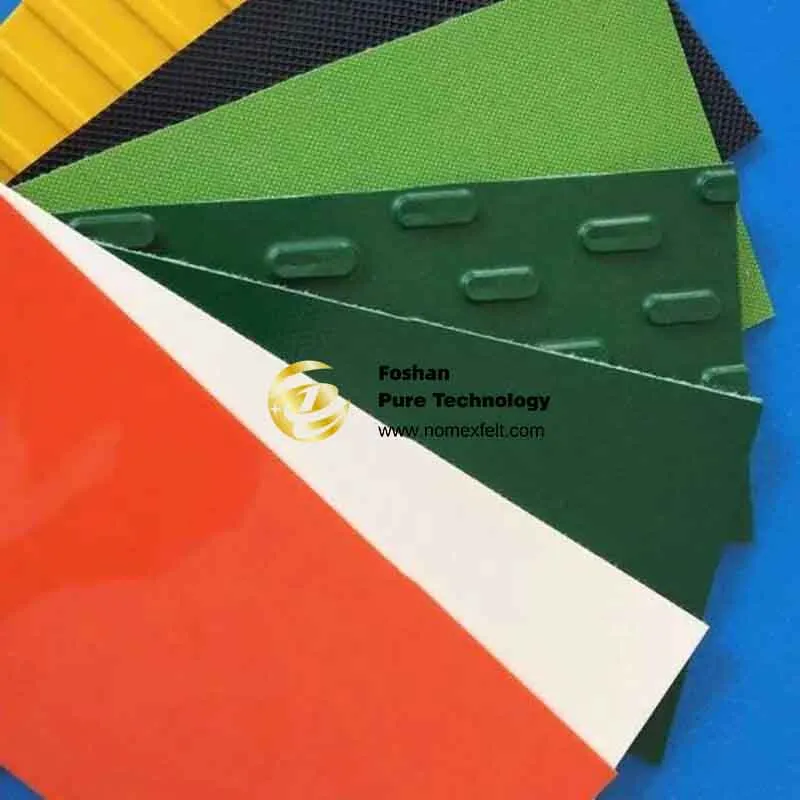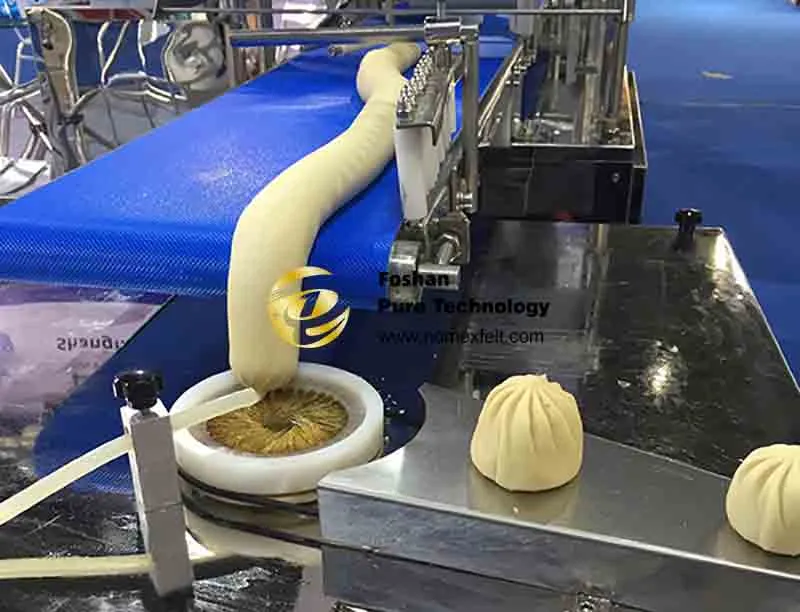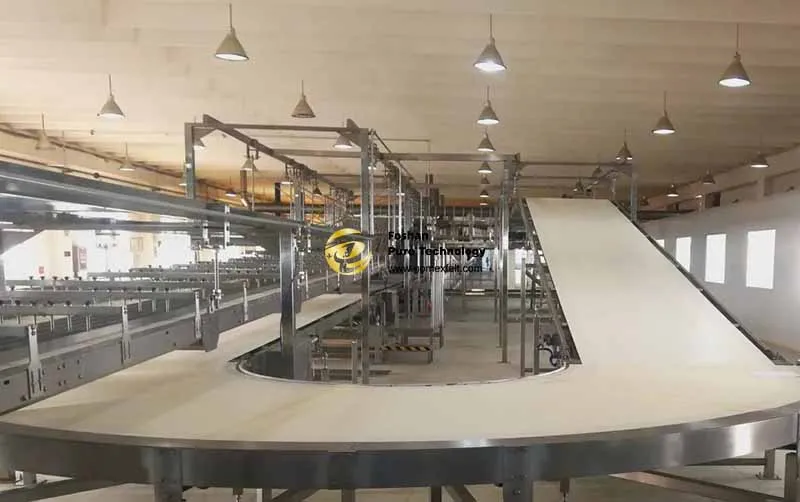In food transportation, light conveyor belts are commonly used. Among the various types of conveyor belts, PVC, PU, and Si conveyor belts are commonly used for general food applications.
PVC conveyor belts and PU conveyor belts are widely used in factories, but the materials of these two conveyor belts are different. The material of PVC conveyor belts is polyvinyl chloride (PVC), and the material of PU conveyor belts is polyurethane (PU).
They can be in direct contact with food and have moderate color and no odor. Conventional Si conveyor belts can withstand high temperatures of 100-500 degrees, have stable chemical properties, and meet food hygiene standards.

The design of food conveyor belts must comply with hygiene regulations. The purpose of this is to ensure food safety and facilitate cleaning. This design uses seamless joints or joints with very low interfaces.
These joints can reduce small corners that cannot be reached during cleaning. Reducing corners can prevent food debris and bacteria from accumulating. This also makes daily cleaning and disinfection easier. The modular design of the conveyor belt can be quickly disassembled and easily cleaned thoroughly.
The manufacture and management of this conveyor belt meet the requirements of BRCGS certification. In addition, the conveyor belt is treated with anti-static treatment.
After treatment, powder will not be absorbed on the surface of the conveyor belt. Then the surface of the conveyor belt can also be kept clean, so the risk of contamination is reduced.
The food industry is a large category. Different food conveyor belts are used according to the characteristics of different categories. For example, conveyor belts for fried foods should be oil-resistant. Conveyor belts for baked foods should be heat-resistant.
The conveyor belt should be strong enough to bear the weight of the items being transported, and the width of the conveyor belt should be appropriate to the size of the items being transported.
Some foods are very sticky or easily broken, so the surface of the conveyor belt needs to be specially treated.
|
Type |
Features |
Application Scenario |
|
PVC |
Strong weather resistance and low-cost |
Lightweight packaging |
|
PU |
Oil and cut-resistant can directly contact food |
Baking, meat processing |
|
PE |
High-temperature resistance, non-toxic combustion |
Tobacco and high-temperature food transportation |
|
Silicone |
High-temperature resistance, anti-stick |
Highly viscous foods such as dough and syrup |
Through reasonable selection and standardized application, food conveyor belts can significantly improve production efficiency while ensuring food hygiene and safety.

In addition to materials and hygiene, the physical design of food conveyor belts is also crucial to their functionality. Matte, glossy, and a variety of pattern options are available according to different scenarios.
Matte surfaces effectively reduce light reflection, while glossy surfaces are easier to clean.
In angled applications, pattern design can increase friction; when the machine is tilted at an angle of more than 45 degrees, it is recommended to use skirts or baffles to improve conveying efficiency.
For horizontal conveying, it is recommended to choose glossy or matte surfaces to provide the best solution based on actual needs.

It is very important to regularly maintain and clean the food conveyor belt. This will extend its service life.
When choosing a conveyor belt, choose one that is easy to clean, which will reduce the time the machine stops and save labor costs. Food conveyor belts must be planned, cleaned, and sterilized on time, and the places that touch the food must be cleaned.
There must be no dirt or watermarks on the conveyor belt. This will reduce the risk of food getting mixed in and dirty, and it will also prevent leftovers from accumulating on the conveyor belt.
Prefer suppliers that offer free material testing and professional consulting services to ensure that food conveyor belts comply with international food safety management system standards, such as ISO 22000. This shows that the supplier has a strict management system in place for food safety. Our silicone conveyor belts are highly chemically resistant and extremely temperature resistant, with a non-stick surface and high adhesion, making them ideal for conveying freshly baked bread and chocolate.
![]()
As a professional conveyor belt supplier, we understand that the food industry can’t slow down. So, when you need to buy a new food-grade conveyor belt for your facility, give us a call.
As we know, Heat Transfer Printing Felt is suitable for fabrics, decorative fabrics, curtains, le...
Read Safety Rules for Laundry Management to be a qualified manager. PARTⅠ Laundry room Safety Gen...
The aluminum extrusion machine is the leading equipment for the production of aluminum profiles. ...
Heat transfer printing is a contemporary printing process in the clothing market. It prints the p...
In the textile industry, felt is only a small part but important. About how to choose felt that i...
Foshan Pure Technology Company., Ltd. helps conveyor belt manufacturers source equipment to metal...
What is Nomex? Meta-amide, or meta-phenylene isophthalamide, is made from meta-phenylenediamine a...
Kevlar fiber Introduction In the development of materials science, Kevlar fiber has particularly ...